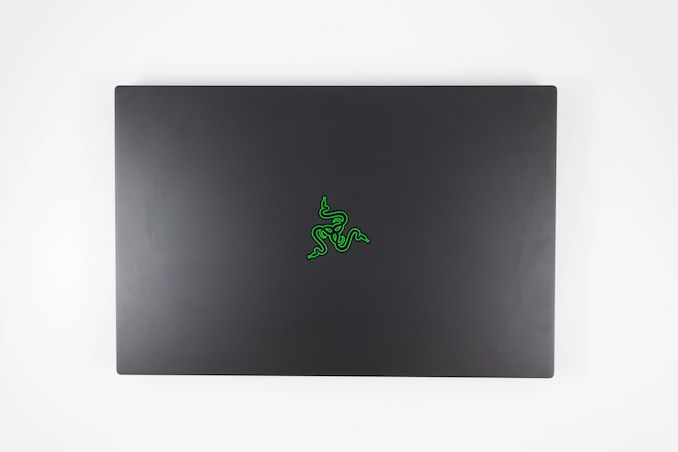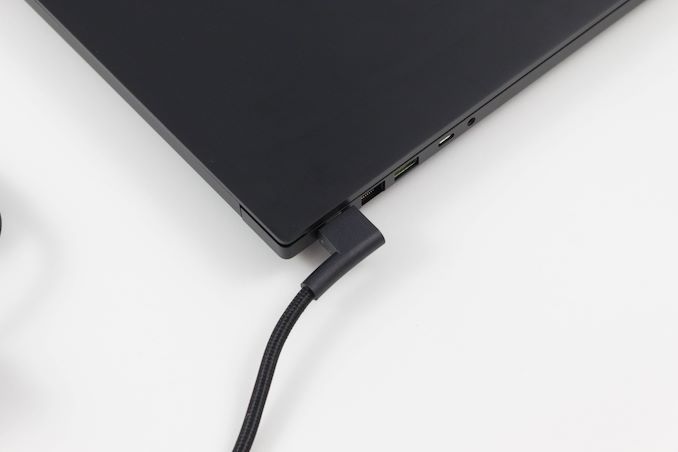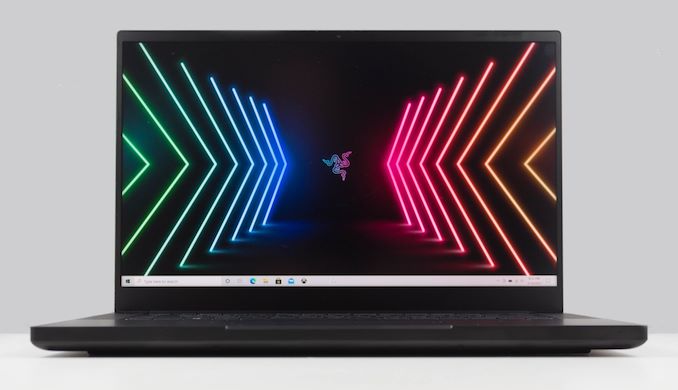The Razer Blade 15 (2021) Review: Amped Up With Ampere
by Brett Howse on March 11, 2021 9:30 AM EST- Posted in
- Laptops
- Gaming
- Razer
- Razer Blade
- Ampere
Final Thoughts
It has been a few generations since we’ve taken a look at a Razer Blade, and what once started as a single notebook for the peripheral company has become an entire lineup of devices, hitting various performance levels and price points, while all offering a unified vision and design.
The Razer Blade 15 is the successor to the original Razer Blade, which was a 14-inch notebook. As part of the move to thinner display bezels, Razer redesigned it to fit a 15-inch display in a chassis that was about the same size, and the new design feels fresh and modern. It does not lose its heritage though, and picking up the Razer Blade 15 brought back immediate memories of the original Razer Blade. The company has tweaked the design, but through and through, this is clearly a Razer laptop.
As with any market, there are various price levels, and with premium offerings you expect a refined experience, something where Razer definitely delivers. Although the fundamental look and feel of the Razer Blade 15 is not much different than the original Razer Blade, it is still a well-built, beautiful design, that seems like it is ageless. Razer’s CNC milled aluminum body is strong, feels great in the hand, and the green touches such as the backlit Razer logo on the lid all work well together. Razer occasionally offers choices other than the black anodized finish, and while that is not the case at the moment, hopefully they will offer some additional finishes in the future. The black looks great, but it is a real chore to keep clean.
A premium gaming laptop must also offer high-performance components under the hood, and Razer delivers here as well. Although Intel’s Comet Lake platform is definitely showing its age, the hex-core processor still delivers good performance. Intel has not yet released the 45-Watt Tiger Lake products, so for now, the 10th generation Intel Core is what is available. For gaming, the GPU is the primary focus, and Razer offers the entire range of RTX 30-Series laptop GPUs with the Razer Blade 15, with RTX 3060, 3070, and 3080 options. The RTX 3070 in the review unit was able to roughly match the (laptop) RTX 2080 from last year, with less power draw, and a cheaper price. And it's a good fit for the QHD display.
Razer’s display choices are vast as well, with high-refresh IPS models, as well as a UHD OLED option. The QHD model in the review unit offers P3 D65 gamut support, as well as a 165 Hz maximum refresh rate; and while the gamut is not ideal, Razer’s included ICC profile did do a reasonable job with accuracy in the wider gamut. It is hard to harp on companies that are trying to offer wide-gamut support, but Windows 10 just handles them very poorly, which is a real shame. Razer also only offers G-SYNC support (which is also required for Advanced Optimus) on just a single display panel. That is a shame, as G-SYNC is a great feature on any gaming notebook.
If the Razer Blade had a weakness, it would be battery life. Despite the laptop supporting NVIDIA Optimus, which allows the dGPU to be powered down when unneeded, the relatively small battery only provided about five hours of battery life. Several years ago, five hours out of a gaming system would be amazing, but it is definitely not enough to use this untethered for any significant amount of time. Most gaming laptops are still designed to be plugged in for the majority of their usage, and despite the Blade 15 being a relatively thin and light design, it still falls into that camp.
There is a lot to like with the Razer Blade, and there really always has been. It is still one of the nicest Windows laptops around, offering plenty of performance in a sleek and elegant design. Some gaming notebooks are very heavily styled, but Razer has always been much more subtle with the touches, and other than the Razer green logo and USB ports, the Blade 15 is very understated.
None of the Razer Blade 15 models are inexpensive, with the most basic model starting at $1700. There are far less expensive gaming notebooks, especially the Clevo rebrands, which may offer more performance per dollar. But as with any premium device, the other components are where the Razer Blade shines. The build. The styling. The looks. The Razer Blade 15 offers all of that, plus the performance of a RTX 30-Series. Who could ask for more?













44 Comments
View All Comments
cknobman - Thursday, March 11, 2021 - link
As much as I love Razor I dont see much reason to buy one of these over a ROG Zephyrus G15 GA503.If Razor cannot start incorporating AMD processors they are going to continue to lose sales.
Alistair - Thursday, March 11, 2021 - link
yeah no Ryzen 5000 is a huge bummer for such a premium priced laptopNetmsm - Thursday, March 11, 2021 - link
totally agreequiksilvr - Friday, March 12, 2021 - link
Not only that this isn't even 11th gen Intel. These "10th gen" chips are still on the 14nm lithography and still on Thunderbolt 3 which is not as robust as Thunderbolt 4 for eGPUs since the controller is built into the CPU and you get a lot less less latency. And yes, it is a MASSIVE difference. https://youtu.be/42o5tPE1uFA?t=224Agent Smith - Thursday, March 11, 2021 - link
AgreeDolda2000 - Thursday, March 11, 2021 - link
I think it will be easier for these high-end brands to motivate AMD processors when AMD start adding built-in Thunderbolt support.Though I guess that being said, I'm not sure what their excuse would be for not just adding a Thunderbolt chipset for a laptop in this kind of price range.
bluefish111 - Wednesday, March 24, 2021 - link
I'm not sure if you guys are aware but during negotiations im sure intel pays razer or charges them less than market price so that they keep intel inside* i think there was an anti competitive case against intel who did the same with dell back in the day I'm sure they still practise the same thing but indirectlySpikke - Tuesday, April 20, 2021 - link
I recently purchased a Blade because you can get the 2020 models for good prices right now, but I really do agree with you regarding AMD. Definitely would have preferred to purchase it with a Ryzen CPU.RSAUser - Thursday, March 11, 2021 - link
Without a price and power draw, the GPU comparison in laptops is a bit meaningless.The power draw/performance isn't much different, and the price went up, this new generation doesn't look that great.
The more interesting stuff is the external enclosure support that some manufacturers did which if standardized can make a very compelling argument as can then allow for higher GPU power draw, swapping it when better ones come out, and maybe thinner/lighter laptops in that class.
Srikzquest - Thursday, March 11, 2021 - link
Unless you need a webcam, I don't see a reason to purchase any other laptop for gaming other than Asus Zephyrus. Unless there is some serious bribing involved or just may be AMD is not able to scale enough to meet the market demand, I don't know why these laptop brands are not supporting AMD processors. Its funny that even if someone supports them, they are not the latest generation ones or are gimped somewhere on the spec sheet and because of this, most consumers think AMD ones are not great or don't exist at all and they avoid them. I don't have anything against Intel but this is not how competition should work and consumers are not getting the best ones out there.